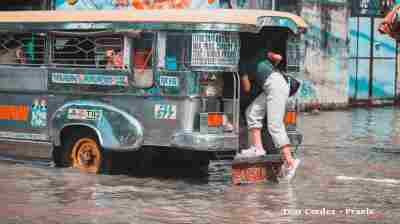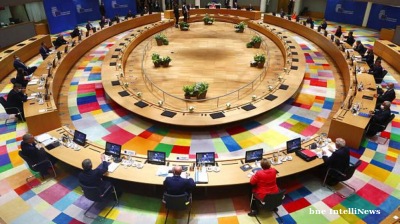EXECUTIVE SUMMARY
Political outlook
Politically, no surprises are expected after the June 2020 general election that cemented the President Aleksandar Vucic’s Serbian Progressive Party’s (SNS’s) dominance of the parliament and political life — at least until the next early election already announced by Vucic for spring 2022.
Macroeconomic outlook
Serbia is entering 2021 with expectations for a strong economic recovery from the coronacrisis. The country was among the least affected in emerging Europe by the economic crisis caused by the coronavirus (COVID-19) pandemic in 2020 and, thanks to a €5.1bn package provided by the government, it did not enter into a deep recession.
Still, the economy declined in 2020, with projections setting the 2020 GDP fall at up to 1.8%, to be followed by an expansion of as much as 5% in 2021.
Budget and debt outlook
Serbia’s government has adopted the budget for 2021, targeting a deficit of 3% of the projected GDP.
General government debt is projected to decline to 58.7% of GDP at the end of 2021, after passing the 60%-of-GDP mark in 2020.
Real economy outlook
Serbian companies are expected to reduce their investments in 2021 due to the coronacrisis. On the other hand, the government plans to spend significant sums on infrastructure projects, mainly construction of motorways.
Markets outlook
In 2021, as Serbia is expected to exit the economic crisis, the stock market should pick up and return to the level before the pandemic.
2. POLITICAL OUTLOOK
With the SNS confirmed in power for another term, after already ruling the country for years, dramatic changes in Serbia’s politics are unlikely in 2021.
Formation of the new government after the June 2020 election took months, for reasons that are still unclear. The SNS won more than 60% of the votes, getting a comfortable majority to rule without coalition partners. Despite that, Vucic once again entered into coalition with the Socialist Party of Serbia (SPS) led by Ivica Dacic. After several opposition parties boycotted the election, Serbia now has a parliament almost devoid of dissenting voices.
Protests, initially sparked by plans for a second lockdown but later co-opted by the far right, erupted this summer. With the fragmented opposition increasingly seeing their prospects in elections as hopeless, further street action cannot be ruled out.
The government under Ana Brnabic will have a few main tasks in 2021: to deal with the coronacrisis, strengthen the health system and achieve robust economic growth of 6%. It will also have to continue the fight against the mafia, attempt to speed up reforms, particularly regarding the rule of law, European integration and human rights.
The current government will only stay in office until April 22, when an early election will be held along with the next presidential election, Vucic has decided.
The inter-election year of 2021 should pass relatively calmly. The government is not expected to implement significant reforms but will rather focus on tackling the coronavirus pandemic and the economic crisis with more state support to affected sectors and individuals.
Towards the end of the year, politicians will enter electioneering mode again, and reforms and government initiatives will be defined by the forthcoming election campaign aimed at securing the SNS yet another victory.
The normalisation process with Kosovo, a requirement for Serbia to secure its goal of EU accession, is ongoing. As Serbia advances on its EU membership path, Vucic might be willing to make compromises in talks with Pristina, but recognition of Kosovan independence is highly unlikely as this would cost the SNS votes — possibly even enough for the party to lose the next election.
Concerning Serbia’s foreign policy, while pursuing EU accession, Vucic has balanced the country’s relations with the EU, the US, Russia and China. Ahead of the US presidential election, Vucic indicated he hoped for a second term for Donald Trump, who was seen as more favourably disposed towards Serbia than US Democratic politicians. Many Serbs were optimistic that a deal with Kosovo might be brokered under Trump. Now Vucic is in the position of negotiating a new relationship with the incoming US president Joe Biden, who backed US military interventions in the wars in first Bosnia and later Kosovo in the 1990s. Biden is expected to work more closely with the EU, especially Germany, than his predecessor in his approach to the Western Balkans.
3. MACROECONOMIC OUTLOOK
Serbia was the country least affected by the coronacrisis in the Western Balkans and Southeast Europe, mainly due to the lower dependence of the economy on the tourism industry. Serbia’s government put also forward the largest economic stimulus in the Western Balkans.
Serbia was in a relatively strong position entering the crisis, with year-on-year growth of 5.1% in the first quarter of 2020, that swung to a decline of 6.4% in Q2, again better than most of its peers.
Despite the overall decline in the economy in 2Q20, led by services and industry, there was positive value-add in agriculture, ICT, financial services and construction. According to the European Bank for Reconstruction and Development (EBRD), the high contribution of manufacturing of basic products to the overall output was another contributor to Serbia’s economy being less affected by the coronacrisis than its local peers.
International financial institutions have rather optimistic forecasts for Serbia’s economy in 2021.
The European Commission expects a full recovery to the pre-crisis level in 2021 after a small contraction of 1.8% in 2020. GDP is projected to rebound by 4.8% in 2021 and to grow by 3.8% in 2022.
The International Monetary Fund (IMF) expects an even smaller economic contraction of 1.5% in 2020 and robust economic growth of 5% in 2021. However, this positive outlook remains uncertain due to the unpredictable course of the epidemic and related economic disruptions in Serbia and its trading partners.
The World Bank also had positive forecast that Serbia will fully compensate for the estimated 2% economic contraction in 2020 with a rise of 3.1% in 2021. The GDP is projected to expand by 3.7% in 2022.
Serbia’s inflation has remained low and is expected to stay within the lower half of the inflation target range of Serbia’s central bank in 2021. According to the IMF, inflation in 2021 will reach 2%, up from 1.6% expected for 2020.
4. BUDGET AND DEBT OUTLOOK
Serbia’s government adopted the budget plan for 2021, targeting a deficit of 3% of the projected GDP. The budget sets revenue at RST1,336.3bn (€11.4bn), while expenses are seen at RSD1,514.8bn.
General government debt is projected to decline to 58.7% of GDP at the end of 2021. In 2020, the debt is expected to go beyond 60% of GDP.
The budget plan includes a 5.9% increase in pensions as of January 1, while the minimum wage in the country and the salaries of employees in the health sector will rise by 6.6% and 5%, respectively. Salaries of employees in the public sector will increase by 5% as of April.
Capital investments are planned at RSD273.9bn, or 18.08% of total expenditures.
In 2021, Serbia’s general government deficit is expected to expand to 8.1% of GDP in 2020 from 0.2% in 2019 due to the government’s fiscal response to the coronavirus pandemic, which is equal to around 8% of the projected end-year GDP.
As fiscal measures are expected to be extended only in a very targeted manner, the country’s deficit should go down to 2.8% of GDP in 2021 and 1.7% of GDP in 2022.
In 2021, Serbia plans to borrow €3bn, issuing Eurobonds on international markets. The bond issues will target institutional investors.
In February 2020, Serbia’s Finance Minister Sinisa Mali said that the government aims to increase foreign investment in local currency sovereign debt issuance by 40% in the short term. At the time, the government signed a memorandum of understanding with Euroclear to establish the appropriate market conditions for efficient sovereign debt issuance in local currency.
The government is also considering the issuance of a green bond on the domestic or international markets in 2021 as well as Chinese yuan-denominated securities in the coming years.
5. REAL ECONOMY OUTLOOK
Although several investment projects were announced in 2020, FDI inflow to Serbia is anticipated to fall to 4.6% of GDP in 2020 due to the coronavirus pandemic, from 7.8% in 2019, but it should rebound to 7.4% in 2021.
Serbian companies are expected to reduce their investments in 2021 due to the coronacrisis, and few companies are expected to launch construction of new factories in the country. On the other hand, the government plans to spend significant sums on infrastructure projects, mainly construction of motorways.
Among the projects expected to begin in 2021 is the construction of the Peace Highway in Serbia. The highway will connect the Serbian city of Nis with Kosovo’s capital Pristina, continue to Albania’s capital Tirana and end in Durres on the Adriatic Sea. The road is an extension of the Trans-European Transport Network (Orient/East Mediterranean corridor) and is a part of Route 7 of the Western Balkans core network.
The country has received around €220mn from three international institutions for the construction of the highway. The sum will be provided by the EBRD, the European Investment Bank (EIB) and the European Union through the Western Balkans Investment Framework (WBIF).
Also in the transport sector, Serbia also is expected to acquire Chinese high-speed trains that would travel at a speed of 200 km/h. The trains should be delivered by the end of 2021.
Energy investments are also ongoing. Serbia hopes to complete its section of the TurkStream pipeline by the end of 2020 and put it into operation in 2021. According to the president of Serbia's natural gas association, Vojislav Vuletic, Bulgaria and Serbia have already connected the pipes of their sections of TurkStream, but the construction of connecting installations and compressor stations remains to be completed.
Russia's Gazprom plans to commission a 200 MW gas-fired combined heat and power (CHP) plant of Serbian oil and gas company NIS in Pancevo in the second quarter of 2021. The plant was supposed to be launched in 2020 but supply of equipment from China was delayed due to the coronavirus pandemic.
In November, French-owned IEL OIE Balkan Renewable Energy announced plans to develop up to four geothermal projects in Serbia. The construction of the first plant should begin in 2021. The company has already carried out feasibility studies for such power plants in the towns of Vranje, Subotica, Kikinda and Ruma. One of these sites will be picked for a pilot project.
Japan’s Toyo Tires Corporation started building a tyre factory in the Serbian town of Indjija in December 2020. The investment in the factory should reach €367mn in the first phase. The plant will spread on 20 ha and will be built by Japan’s Takenaka company. It will take 17 months to build and should produce 5mn tyres per year. The factory will employ 537 people.
Another Japanese company, electric motors producer Nidec Corporation, is considering investing €100mn in the construction of a factory in the northwestern city of Novi Sad. If Nidec decides to invest in Serbia, the construction of the factory could begin in 2021 and the company would employ around 100 people.
6. MARKETS OUTLOOK
Serbia’s blue-chip Belex 15 index collapsed in March following the coronavirus outbreak and only partially recovered in the following months. Several of the companies making up the index saw a significant collapse of prices with the biggest losers being household appliances maker Alfa Plam, oil refinery NIS and agricultural chemicals maker Galenika Fitofarmacija.
In 2021, as Serbia is expected to exit the economic crisis, the stock market should pick up and return to the level before the pandemic.
Serbia's government plans to launch the privatisation of 20 state-owned enterprises by the end of 2021 with some of the deals likely to be completed via the bourse. The list of companies that will be privatised includes bus transport company Lasta, intercity bus company Severtrans, river transport firm Jugoslovensko Recno Brodarstvo (JRB), mining company Rudnik Kovin and engineering and construction firm PIM Ivan Milutinovic.
Features

Europe remains Russia's number one biggest importer of gas, top five importer of oil in August
US President Donald Trump complained that the EU is still importing too much Russian oil and that the White House will not put sanctions on Russia unless the EU cuts back on this business.
_1758174730.jpg)
Indonesia’s Raja Ampat - tourism hub or den of corruption?
In recent years, Indonesia has doubled down on promoting Raja Ampat, a remote archipelago in West Papua famed for its biodiversity, as a global eco-tourism icon.

Flood corruption scandal shakes the Philippines
The Philippines is grappling with a widespread controversy surrounding its flood control programme, with allegations of billions of pesos being siphoned off from projects meant to protect vulnerable communities.

The European Commission proposes to “creatively” tap Russia’s $300bn of frozen assets with Reparation Loans
The European Commission is floating a new idea of how to “creatively” tap Russia’s $300bn of frozen assets without the need to appropriate, which is legally questionable, by replacing the money transferred to Kyiv with EU-backed bonds.




